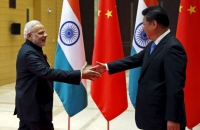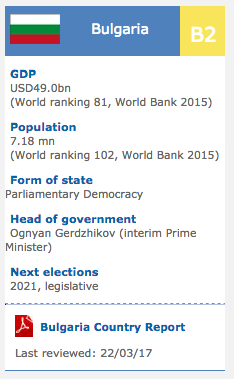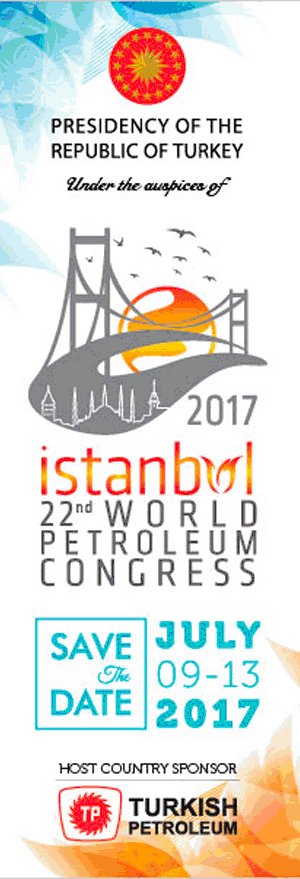Brunei : Towards A Transboundary Haze-Free ASEAN By 2020
2015/11/16

To sustain the efforts of a transboundary haze-free ASEAN, it is significant to remain vigilant and be prepared early enough to prevent any occurrence of fires. This calls for better early warning systems and swift deployment of fire-fighting resources even before the fires starts.
In the longer term, preventive activities should be intensified, through effective collaboration with various stakeholders at the local, national and international levels.
Enhance monitoring and surveillance actions
Currently, incidences of forest fires and weather conditions are monitored and reported by the ASEAN Specialised Monitoring Centre (ASMC) which provides hotspot data and weather and climate forecasts for the ASEAN region. Although hotspot data is useful, it can only inform completed incidences. Furthermore, the accuracy of the hotspot data is significant to identify actual locations and origins of fires.
ASEAN Member States (AMS) should consistently statement and share fire-related data with the ASMC to validate the accuracy of hotspot data and refine hotspot algorithm. The accuracy of the hotspot data is significant to ensure quick response to genuine fires. This would allow fire-fighters to suppress incipient fires quickly while its scale is still manageable and to facilitate effective management of fire-fighting resources.
Efforts to enhance the Fire Danger Rating System (FDRS) – which indicates the potential of fires occurring based on weather and ground conditions – at both the national and regional level should be continued. A predictive FDRS that is capable of providing forecasts will be very useful in making advance preparations to pre-position necessary fire-fighting assets in the fire prone areas.
Work on haze trajectory modelling should be revived on a regional collaborative basis part relevant experts, to estimate the movement of transboundary haze, so that preparations can be made early enough to mitigate the impact of haze.
ASEAN has adopted the Haze Monitoring System (HMS) proposed by Singapore to identify perpetrators of fires for monitoring and enforcement purposes. However, its implementation has stalled because of the difficulties expressed by governments to share digitised maps of concession areas. AMS should instantly operationalise the HMS, through maps available from governments and other reputable sources, as it can serve as a strong deterrent to potential violators.
Shift towards better prevention and preparedness
The Haze Agreement contains extensive provisions on national emergency response, and joint emergency response and assistance in case an affected country is not able to tackle forest fires on its own. ASEAN has developed a very comprehensive SOP for joint emergency response. While there had been exchange of fire-fighting resources before, it is regrettable that Indonesia has long delayed the acceptance of such offers this time. It is significant that in next such joint emergency response should be readily deployed well before the fires get unmanageable through the fully functioning ASEAN Centre for Transboundary Haze Pollution Control.
The Panel of ASEAN Experts should be fully utilised to assist affected nations in assessing the situation on the ground and to advise their own governments on the necessary assistance required as a pre-emptive measure before fires get out of control.
Nevertheless, as required under the Agreement, it is the responsibility of the respective AMS to control any fires within their territory. AMS should be properly prepared based on a possible worst case scenario. Land and forest fires can flare up and spread widely and quickly, most of them in remote and inaccessible places. In such case, urban fire-fighting equipment or techniques are ineffective. Therefore, fires are best put out early before it gets out of control.
The communities in remote areas should be trained and provided with the necessary appropriate fire-fighting equipment. Of course, communities should be discouraged from using fires; and the provision of small farm equipment on a collective basis could help them to clear land without fires, and to put out fires quickly as they occur.
Private enterprises, particularly plantation companies should not only focus on mitigating fires in their own concessions, but as well prepare and assist the communities around them to suppress fires or to clear land using the appropriate land clearing equipment.
Proactively and entirely involve all stakeholders
The Haze Agreement, through Article 3(5), mandates Parties, in addressing transboundary haze pollution, to involve, as appropriate, all stakeholders, inclunding local communities, non-governmental organisations, farmers and private enterprises.
As far as haze is concerned, almost everyone has been affected and is clamouring for action to end this long standing problem. Governments can mobilise these stakeholders in an effective manner to create a proactive partnership that allows them to mutually assist each other in resolving the problem.
For it to happen, governments have to be transparent and build trust part stakeholders. Media communication ought to reflect the ground situations correctly. There should be wider dissemination of new initiatives such as the Singapore Transboundary Haze Pollution Act and Indonesia’s One Map Policy so that there is better appreciation of its impact on preventing fires.
The public is increasingly turning the heat on those recalcitrant plantation enterprises which have the capability and resources to prevent fires in their concessions. These enterprises should follow strictly their declared environmentally sustainable practices and corporate social responsibility to ensure no fires occurs within their jurisdiction or vicinity.
The majority affected community are those in the vicinity of fires. Their fundamental concern is to earn a livelihood and not about fires that cause haze. The ASEAN Peatland Project has demonstrated that a win-win situation can be created if proper farming practices are adopted by the communities in and around the peatlands. The communities not only gain sustainable livelihood, but as well protect the peatland eco-system.
Nexus between haze agreement and world accords
Fires and haze are just symptoms of a larger issue concerning not only the environment, but as well the broader social, economic and political dimensions. Wild fires release huge all of greenhouse gases, particularly fires from peatlands which is essentially carbon-rich soil. Wild fires can wipe out huge tract of forests and destroy biodiversity and incomparable ecosystems such as peatlands.
Therefore, the Haze Agreement does contribute due towards achieving the objectives of several world accords such as the UN Framework Convention on Climate Change, the Convention on Biological Diversity, and the recently adopted UN Sustainable Development Goals.
Sadly, there is a general feeling part AMS, and additional so part the world community, that fires and haze are rather unrelated to these world issues. Hence the ownership of and the commitment to the implementation of the ASEAN Haze
Agreement is rather lukewarm or unenthusiastic.
Hopefully, the ASEAN Agreement on Transboundary Haze Pollution will get fresh vigour and due recognition as the primary means to realising an ASEAN transboundary haze-free region by the year 2020, from presently on current prolonged record-breaking haze crisis.
*Raman Letchumanan is a Senior Fellow with the S. Rajaratnam School of International Studies (RSIS), Nanyang Technological University. The views expressed here are strictly his own. Dr Raman was the person-in-charge of fire and haze issues, part others, at the ASEAN Secretariat from 2000-2014, and prior to that in the Malaysian Government. This is part of a new series on the haze issue.
- Related Articles

Climate change laws around the world
2017/05/14 There has been a 20-fold increase in the number of global climate change laws since 1997, according to the most comprehensive database of relevant policy and legislation. The database, produced by the Grantham Research Institute on Climate Change and the Environment and the Sabin Center on Climate Change Law, includes more than 1,200 relevant policies across 164 countries, which account for 95% of global greenhouse gas emissions.

Asia Economic Roundup: July 2016
2016/07/18 Without a doubt Britain’s decision to abandon the European project will be remembered globally as a wake-up call for political elites around the world. It seems the people chose to go against immediate economic interest and accept an extra financial turmoil in order to address deeply seated social and identity issues. Although Asia’s exposure to the UK is relatively limited and this is not exactly a “Lehman Moment”, nonetheless we can expect a lively debate as policymakers in Asia look for an appropriate response to address the needs of vulnerable households.Agriculture remains a key component of Indonesia’s economy
2015/02/14 Hopes are rising that long-awaited reforms of national-owned enterprises and government initiatives can help Indonesia’s agriculture sector rebound from a year of commodity price shocks, which have taken their toll on the country’s biggest exports, particularly palm oil. Indonesia tops the world inventory for crude palm oil (CPO) production and is as well a major producer of several other commodities, inclunding rubber, cocoa and coffee. Confidence amongst palm oil and rubber producers plummeted this summer, at the same time as prices hit near five-year lows. With increase at a standstill across much of the agricultural sector, industry insiders are calling on Jakarta to do additional to help.
Masjid Serdang
2015/02/14 A string of major international trade agreements, due to be implemented in 2015, promise to strengthen and diversify Brunei Darussalam’s exports as it ramps up efforts to reduce its dependency on crude oil sales in the wake of plummeting prices. The price of exports slumped 23.2% in October, due to lower shipments of oil, according to the new figures from the Department of Economic Planning and Development. A 7.3% decline in oil exports was due caused by the fall in average oil prices, it noted.
- Brunei News
-
- BRUNEI : The next chapter for the Trans-Pacific Partnership
- AFGHANISTAN: Higher earning Why a university degree is worth more in some countries than others
- AFGHANISTAN: Global growth will be disappointing in 2016: IMF's Lagarde
- BRUNEI : Brunei Darussalam eyes Pacific trade benefits
- BRUNEI : Brunei Darussalam looks to work around LNG challenges
- BRUNEI : Fisheries expansion goes onshore in Brunei Darussalam
- Trending Articles
-
- WORLD: GLOBAL LNG-Prices stay low as oversupply dogs market
- ANGOLA: Angola's inflation slows to 30.51 percent year/year in June
- PORTUGAL: Portugal's cork-to-oil mogul Amorim dies at 82
- BENIN: Benin president abandons plan to reduce number of presidential terms
- ABIDJAN: Ivory Coast to issue 3-year, 100 bln CFA bond on July 19
- BENIN: West Africa BCEAO central bank holds interest rates unchanged












